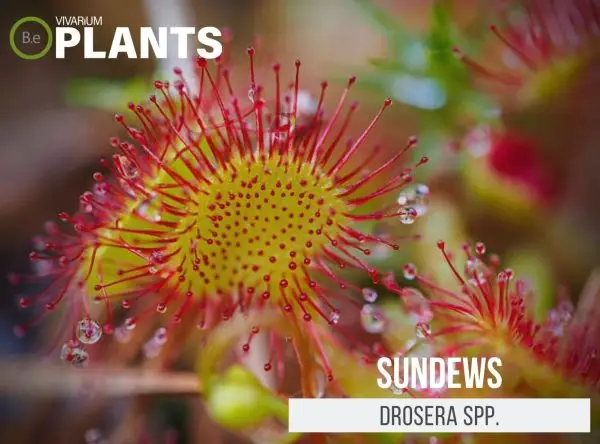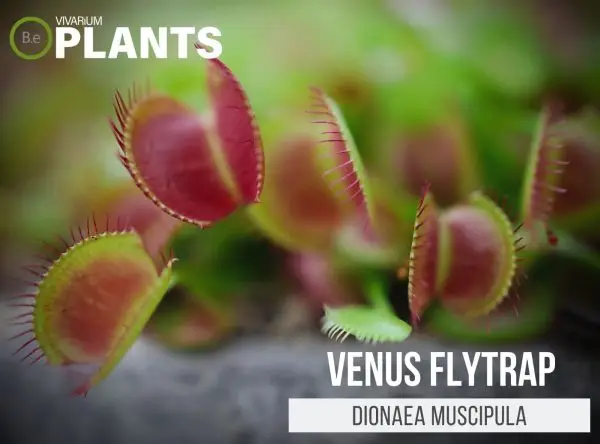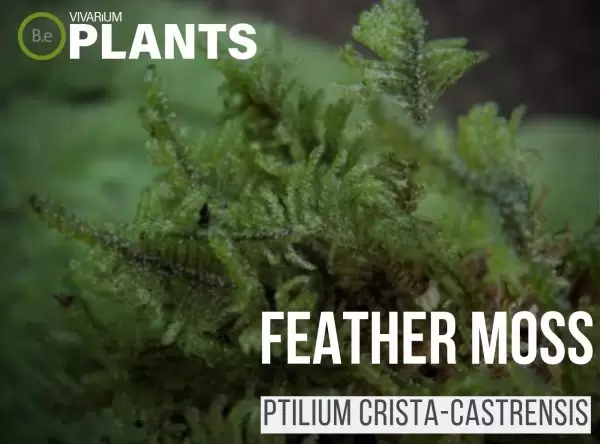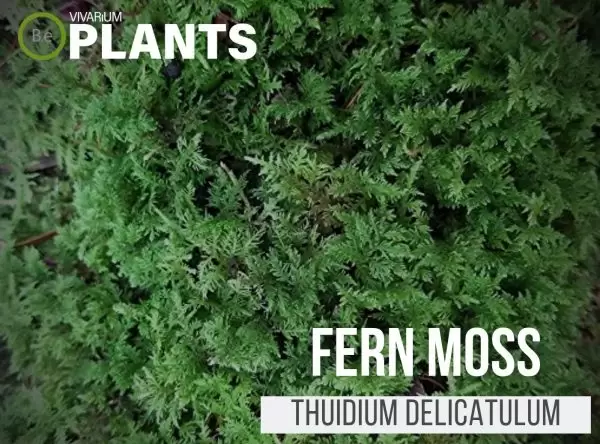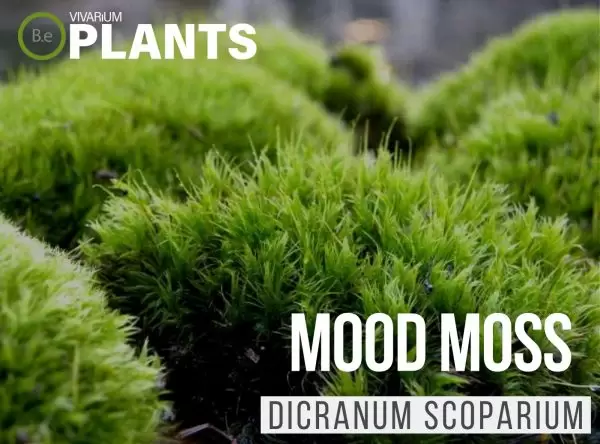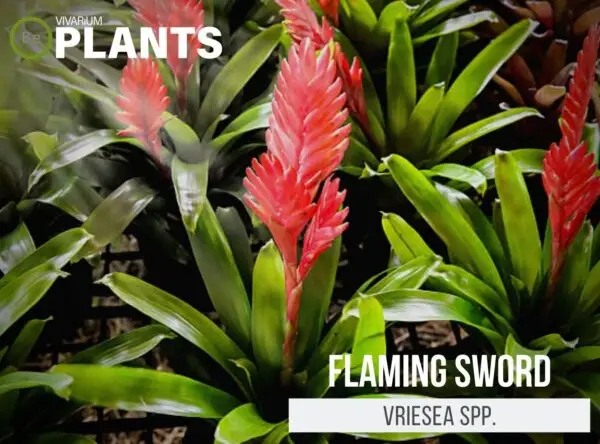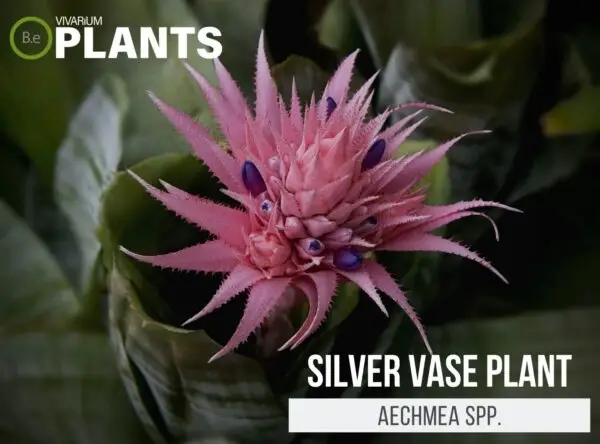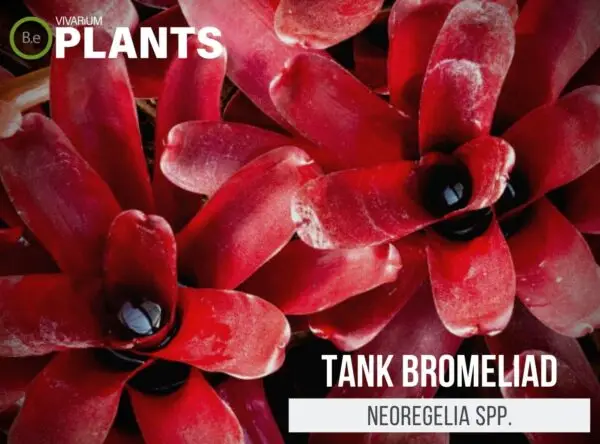Paludariums offer a very unique take on the usual vivarium-keeping hobby.
The combination of a terrarium with aquatic features creates new elements we can work with.
This extends the choice of flora into a new array we can label as paludarium plants.
This guide will help you understand what type of foliage works best with this marsh environment.
In addition, we will cover a complete list of plants best suited for an aqua-terrarium.
Table Of Contents:
ToggleWhat Are Paludarium Plants?
Paludarium plants are various types of vivarium flora designed to fit in a small enclosure with moderate levels of humidity.
The structural design of a paludarium offers a hobbyist a large array of foliage to work with.
But, this list of plants can easily be broken down into four categories that we will briefly cover: Aquatic, Semi-Aquatic, Terrestrial, and Epiphytic.
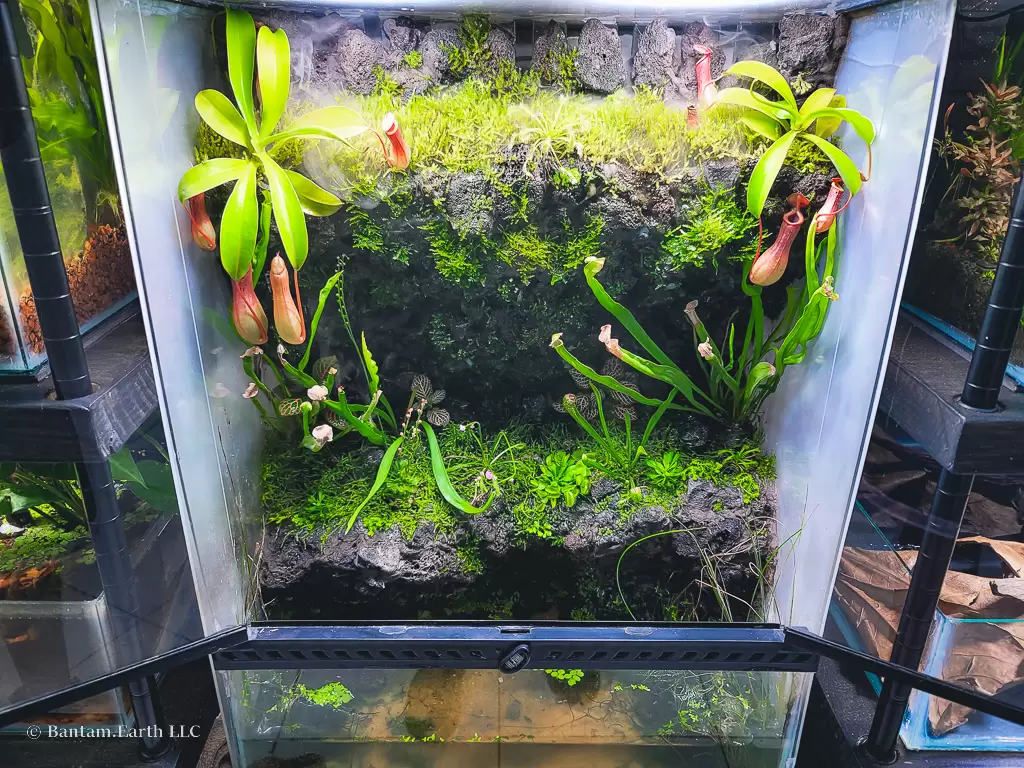

Paludarium plants can range from being fully aquatic to fully terrestrial.
Marginal plants like the kind found in the riparium plant list will thrive in this type of vivarium as well.
With the varying ranges of humidity in these kinds of vivariums, many epiphytic plants will do far better in this setup than in a typical terrarium.
Aquatic Plants
Even though there is an infinite list of aquatic plants that are commonly used in the aquarium hobby, not all are a fit for paludariums.
The addition of a land area above the line of water means lighting will have to work harder to reach aquatic plants.
Increasing the overall lighting to compensate for this may work against plants growing on the surface.
To combat this problem, aim for plants that are tolerating low-light tolerate and slow growth.
Here is a list of fully aquatic paludarium plants that I recommend working with:
(Click on a plant to learn more about it!)


American Waterweed (Elodea canadensis)
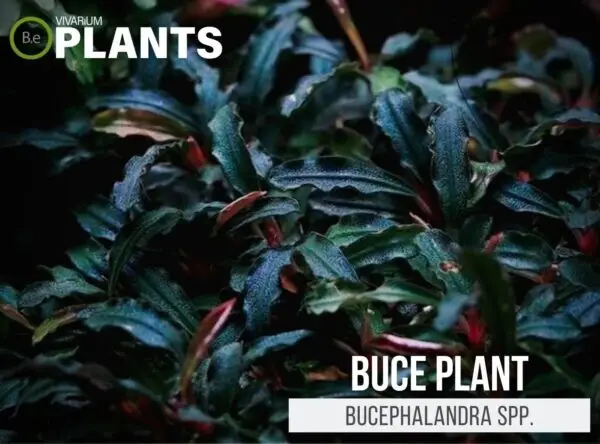

Buce Plant (Bucephalandra spp.)
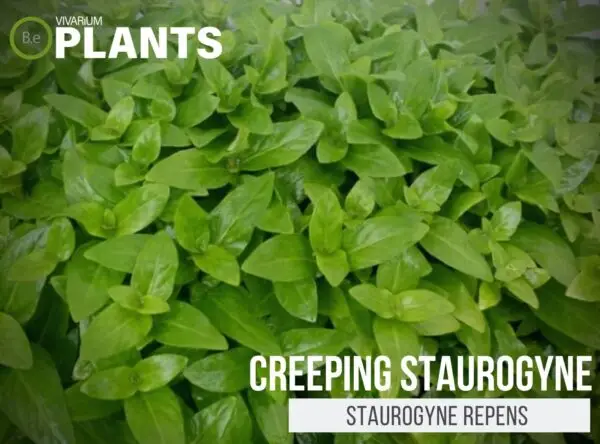

Creeping Staurogyne (Staurogyne repens)


Dwarf Rotala (Rotala rotundifolia)


Eelgrass (Vallisneria spp.)


Guppy Grass (Najas guadalupensis)
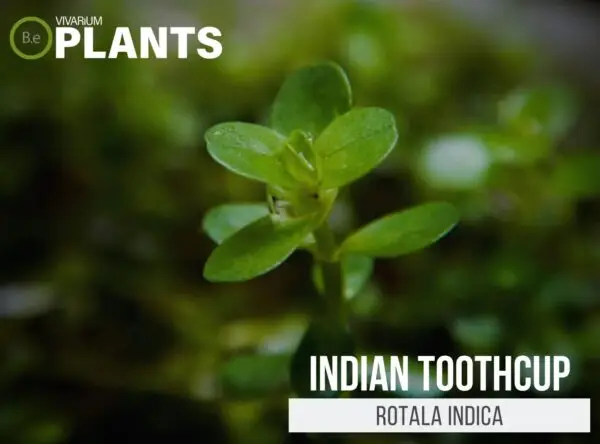

Indian Toothcup (Rotala indica)


Lemon Bacopa (Bacopa caroliniana)
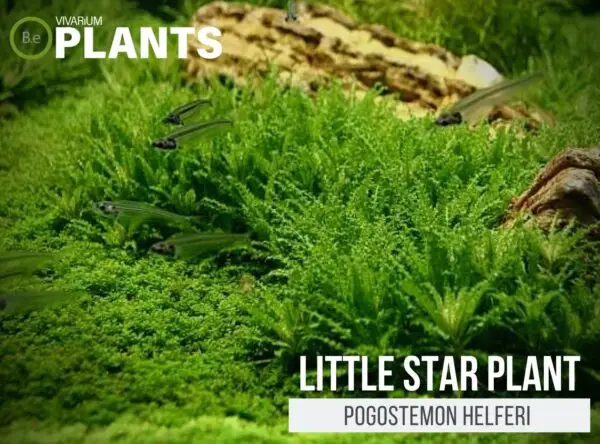

Little Star Plant (Pogostemon helferi)
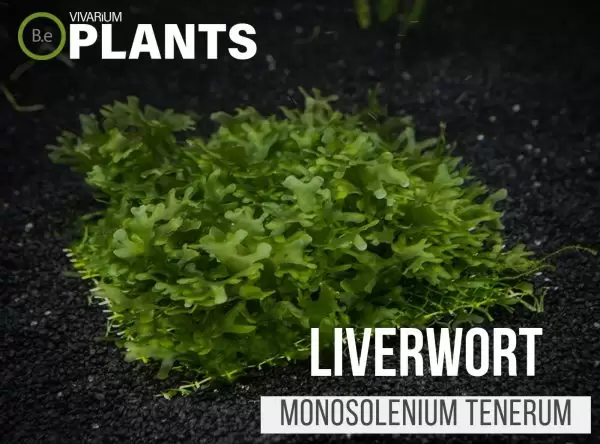

Liverwort (Monosolenium tenerum)


Moneywort (Bacopa monnieri)
Semi-Aquatic Plants
Marginal plants are where things get really interesting.
The high levels of humidity this marsh enclosure provides give many aquatic plants the ability to grow immersed… Just like in a riparium.
The defining difference between planting in a paludarium vs a riparium is the addition of land.
This offers us the ability to create bog-like terrains or platforms.
We can now consider marginal plants that particularly need more oxygenated substrates to thrive.
Here is a list of semi-aquatic plants well suited for the middle portion of a paludarium:
Common Marginal Plants
Some of the most popular marginal plants make great selections of immersed flora.
The high levels of humidity and co2 rich atmosphere paludariums offer easily sustain marginal plants.
Lighting may be an important factor to keep in mind when choosing these plants.
Paludarium plants grown above the waterline may cast shade over the aquatic section.
For that reason, these low-light aquatic plants are favored choices for common marginal plants:
(Click on a plant to learn more about it!)


Anacharis (Egeria densa)


Anubias (Anubias spp.)


Aponogeton Bulbs (Aponogeton ulvaceus)


Aquatic Cardinal Plant (Lobelia Cardinalis)


Brazilian Pennywort (Hydrocotyle leucocephala)
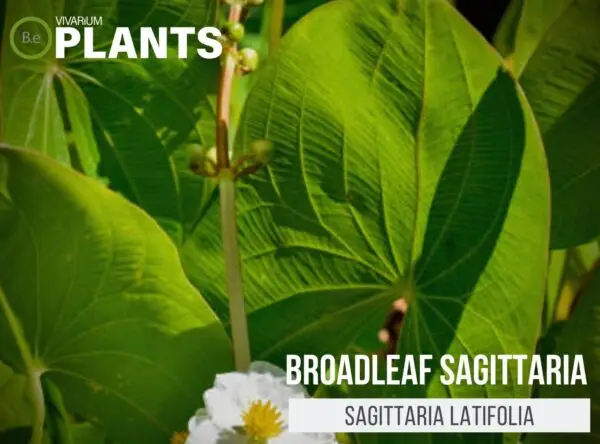

Broadleaf Sagittaria (Sagittaria latifolia)


Crypts (Cryptocoryne spp.)


Dwarf Sagittaria (Sagittaria Subulata)


Giant Hygrophila (Hygrophila corymbosa)


Hedyotis Salzmannii (Oldenlandia salzmannii)
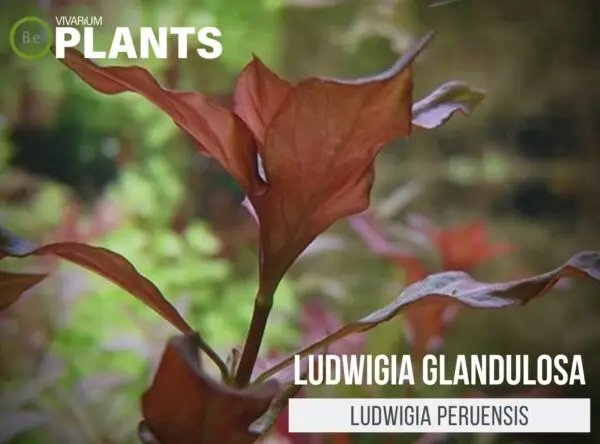

Ludwigia Glandulosa (Ludwigia Peruensis)


Parrot’s Feather (Myriophyllum aquaticum)


Pondweed (Potamogeton spp.)


Red Ludwigia (Ludwigia Repens)


Sword Plants (Echinodorus spp.)
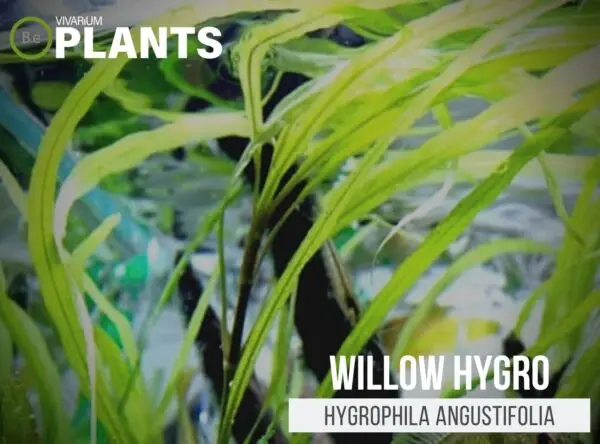

Willow Hygro (Hygrophila angustifolia)
Common Houseplants
Many common houseplants will work very well in the marshy environment a paludarium provides.
These types of enclosures offer a multitude of substrates suitable for virtually any kind of houseplant.
Aim for flora that does well in tropical areas and requires either well-drained soil or immersed setup.
Here are my picks for houseplants that can easily be converted into paludarium plants:
(Click on a plant to learn more about it!)


Alocasia Black Velvet (Alocasia reginula)
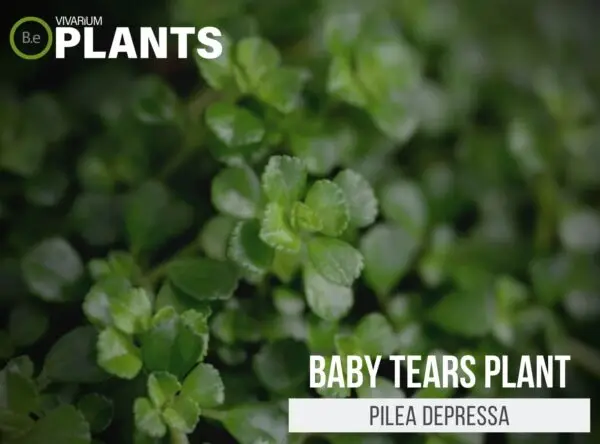

Baby Tears Plant (Pilea depressa)
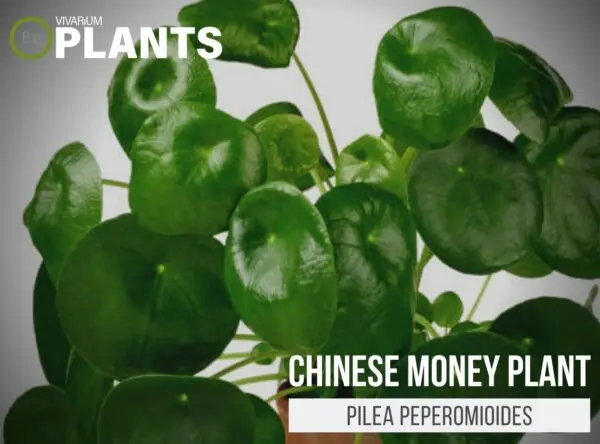

Chinese Money Plant (Pilea peperomioides)


Corkscrew Rush (Juncus effusus ‘Spiralis’)


Dragon’s Tongue (Hemigraphis repanda)


Dumb Cane (Dieffenbachia spp.)


Friendship Plant (Pilea involucrata)


Laceleaf (Anthurium spp.)


Lucky Bamboo (Dracaena braunii)
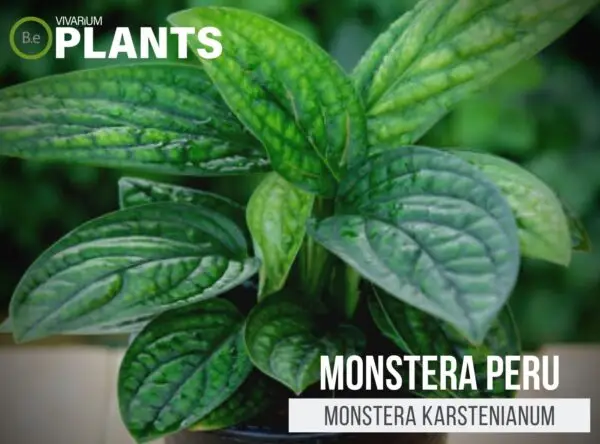

Monstera Peru (Monstera karstenianum)


Moon Valley Pilea (Pilea Mollis)
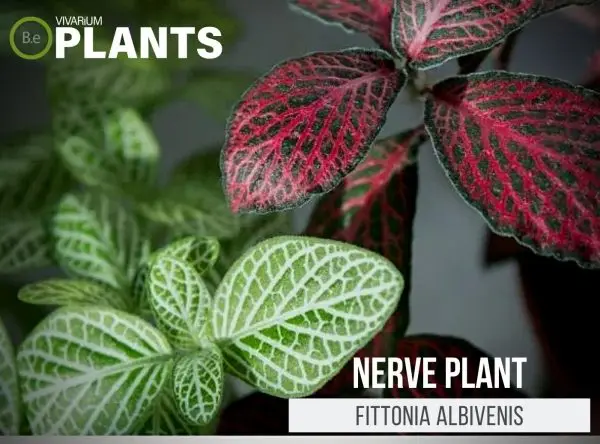

Nerve Plant (Fittonia albivenis)


Paper Reed (Cyperus papyrus)
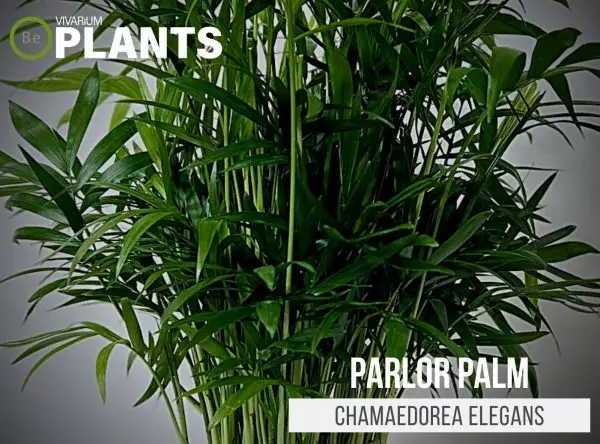

Parlor Palm (Chamaedorea elegans)


Peace Lily (Spathiphyllum spp.)


Pinstripe Calathea (Calathea ornata)


Prayer Plant (Maranta leuconeura)
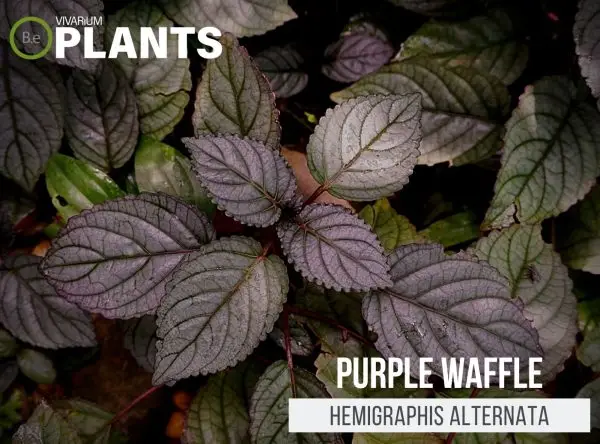

Purple Waffle (Hemigraphis alternata)


Silver Monstera (Monstera siltepecana)
Ferns
Aquatic ferns are one of the most sought-after choices of paludarium plants used in the hobby.
They are easy to find and really help establish the tropical feel many strive to design.
Ferns come in a variety of sizes and have the ability to grow beyond the line of water.
Here are my top picks of marginal ferns great for this type of enclosure:
(Click on a plant to learn more about it!)
Mosses
Aquatic moss is a great plant all around for any vivarium that has high humidity.
As a paludarium plant, it’s even better, especially under the right conditions.
Depending on where the moss is placed it will vary in growth pattern.
When grown underwater, it will grow bushy and thick.
Above water will cause moss to self-prune and create a dense mat across any surface it can reach. Here is the best moss for paludariums:
(Click on a plant to learn more about it!)


Christmas Moss (Vesicularia montagnei)


Crystalwort (Riccia fluitans)


Flame Moss (Taxiphyllum sp.)


Hornwort (Ceratophyllum demersum)


Java Moss (Taxiphyllum barbieri)


Nano Moss (Amblystegium serpens)


Peat Moss (Sphagnum moss)


Phoenix Moss (Fissidens fontanus)
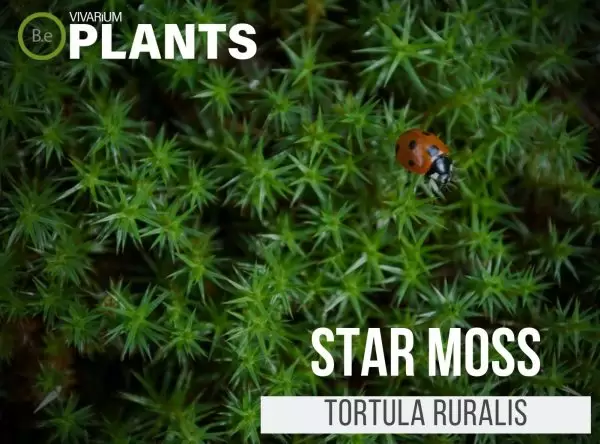

Star Moss (Tortula ruralis)


Taiwan Moss (Taxiphyllum alternans)
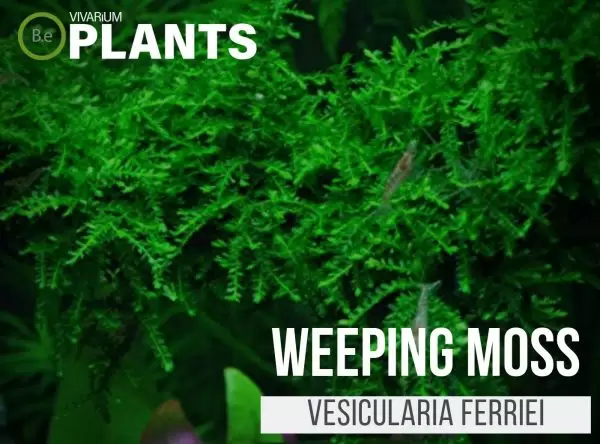

Weeping Moss (Vesicularia ferriei)
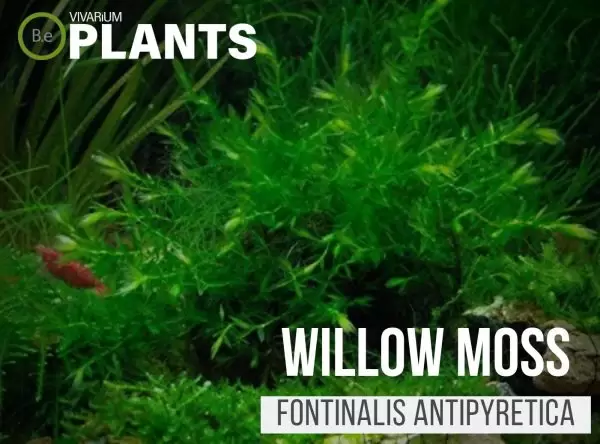

Willow Moss (Fontinalis antipyretica)
Vines
Semi-aquatic vines are another interesting plant to work within a paludarium.
Many vining plants can grow immersed in water with roots fully under the line of water.
This type of foliage can be pruned into a carpeting mat that can climb vertically.
Here are a few semi-aquatic vines that are perfect for this vivarium.
(Click on a plant to learn more about it!)


Cebu Blue Pothos (Epipremnum pinnatum)


Creeping Jenny (Lysimachia nummularia)
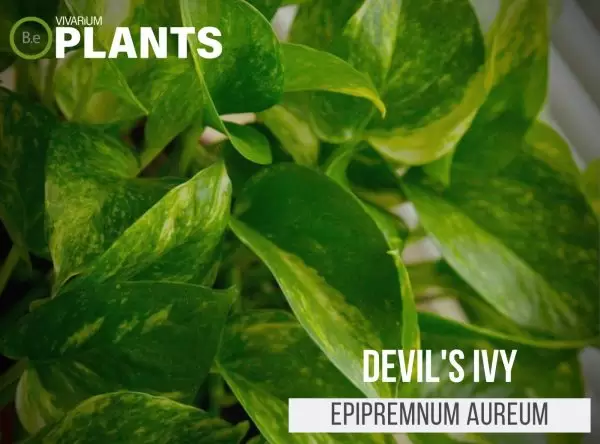

Devil’s Ivy (Epipremnum aureum)


Ecuador Philodendron (Philodendron verrucosum)
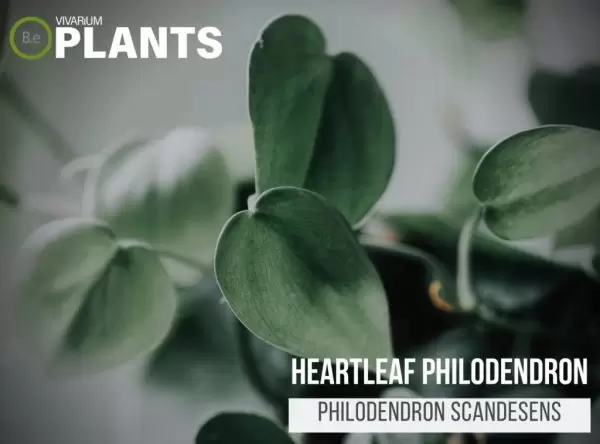

Heartleaf Philodendron (Philodendron scandesens)


Manjula Pothos (Epipremnum aureum ‘Manjula’)
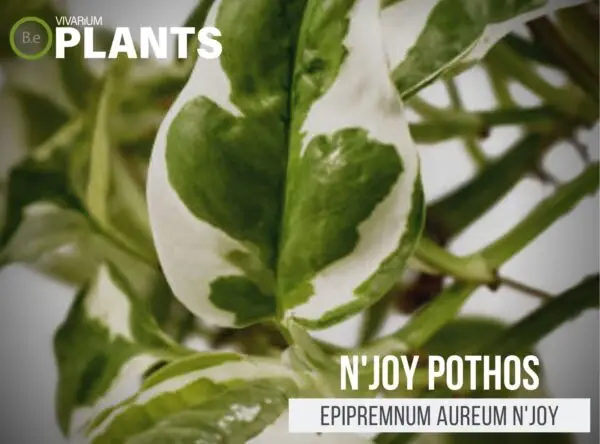

N’Joy pothos (Epipremnum aureum N’Joy)


Philodendron Brasil (Philodendron hederaceum)
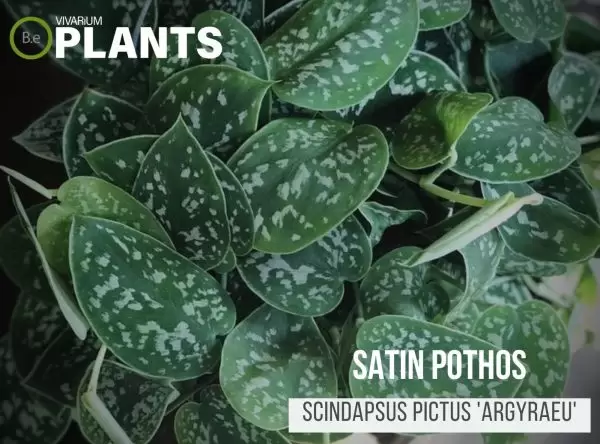

Satin Pothos (Scindapsus pictus ‘argyraeu’)
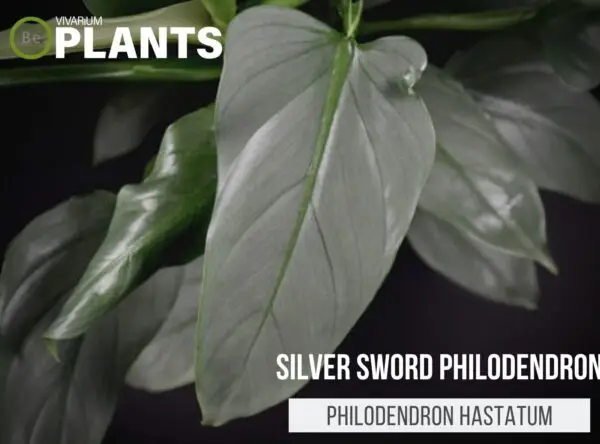

Silver Sword Philodendron (Philodendron hastatum)


Trailing Daisy (Sphagneticola trilobata)


Velvet Leaf Philodendron (Philodendron micans)
Stem Plants
There are a number of aquarium stem plants that can transition well as semi-aquatic plants.
Low-light stem plants that suit these conditions make excellent paludarium plants.
This foliage comes in an array of colors and compositions that will further bring out the essence of any tropical theme.
Here is a list of stem plants I recommend for paludariums:
(Click on a plant to learn more about it!)


American Waterweed (Elodea canadensis)


Anacharis (Egeria densa)


Brazilian Pennywort (Hydrocotyle leucocephala)


Dwarf Hygrophila (Hygrophila polysperma)


Giant Hygrophila (Hygrophila corymbosa)


Hedyotis Salzmannii (Oldenlandia salzmannii)


Ludwigia Glandulosa (Ludwigia Peruensis)


Parrot’s Feather (Myriophyllum aquaticum)


Red Ludwigia (Ludwigia Repens)
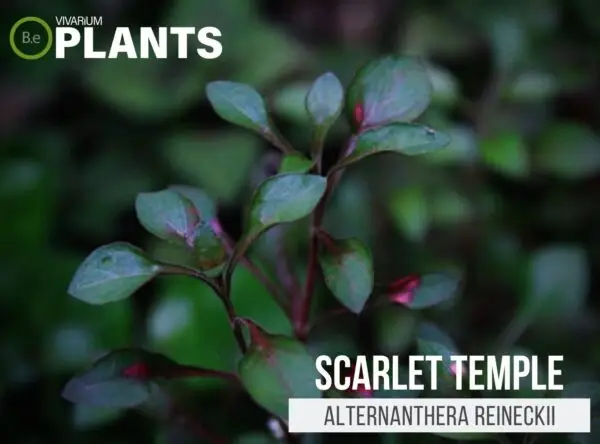

Scarlet Temple (Alternanthera reineckii)


Willow Hygro (Hygrophila angustifolia)
Floating Plants
Much like moss, floating plants are also very versatile flora that can fit in any aquatic vivarium.
My only drawback with these plants is they grow like crazy.
Use this paludarium plant sparingly and don’t hesitate to discard excess during routine maintenance.
Here is a list of popular floating plants suitable for a paludarium.
(Click on a plant to learn more about it!)
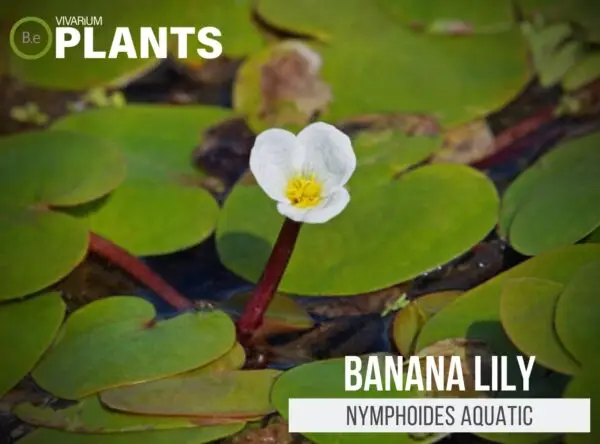

Banana Lily (Nymphoides aquatica)


Common Duckweed (Lemna minor)


Dwarf Water Lily (Nymphaea stellata)
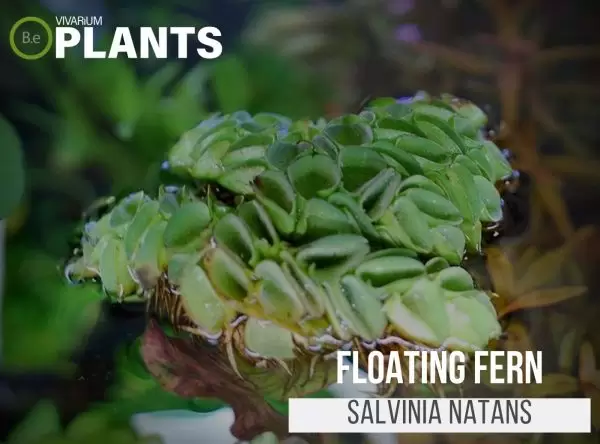

Floating Fern (Salvinia natans)


Frogbit (Limnobium laevigatum)


Guppy Grass (Najas guadalupensis)


Hornwort (Ceratophyllum demersum)
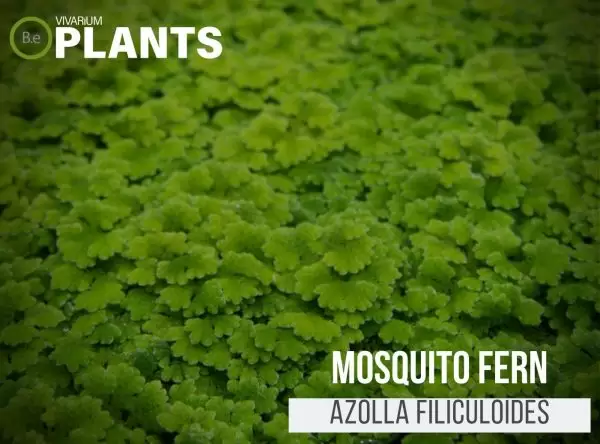

Mosquito Fern (Azolla filiculoides)


Water Lettuce (Pistia stratiotes)


Water Spangles (Salvinia minima)
Carnivorous Plants
A new trend taking the vivarium niche by storm is carnivorous plants.
The swampy conditions of a paludarium are perfect for these savage plants.
Making a bog garden suitable for this foliage is easy with access to water being so close.
For those working with a limited amount of terrestrial real estate, there are a number of fully aquatic carnivorous plants as well that can be fully submerged in water.
Here is a list of paludarium carnivorous commonly used:
(Click on a plant to learn more about it!)
Terrestrial Plants
Terrestrial plants in a paludarium focus on species that need to be established in well-drained substrates.
Unlike bogged plants or marginal, this foliage will have to be placed in an area of the enclosure that doesn’t have any part of the plant close to water.
These paludarium plants are often used in terrariums that are very humid.
Here’s a list of terrestrial plants hobbyists consider for a paludarium:
Mosses
terrestrial moss, or terrarium moss in many cases, will thrive in the swampy habitats of an aqua-terrarium.
The difference between these mosses and the kind covered earlier is these mosses will have to be out of direct contact with the aquatic section.
land-based moss will grow on any surface and just needs good humidity and low lighting.
Here is a list of mosses well suited for the land area of a paludarium:
(Click on a plant to learn more about it!)
Vines
Vining plants come in a large array of styles perfect for the marginal ecosystem paludariums provide.
Creeping plants that need well-drained soil separate these types of vines from the kind mentioned earlier.
If you are looking for a good background plant that can be trained into a carpeting mat, I would strongly recommend these:
(Click on a plant to learn more about it!)


Aluminum Plant (Pilea cadierei)
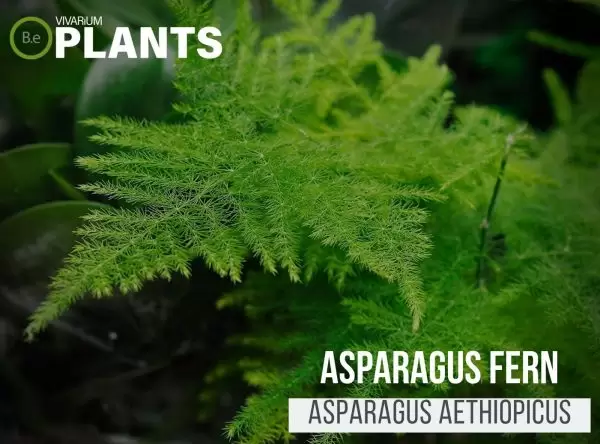

Asparagus Fern (Asparagus setaceus)


Baby Tears Plant (Soleirolia soleirolii)
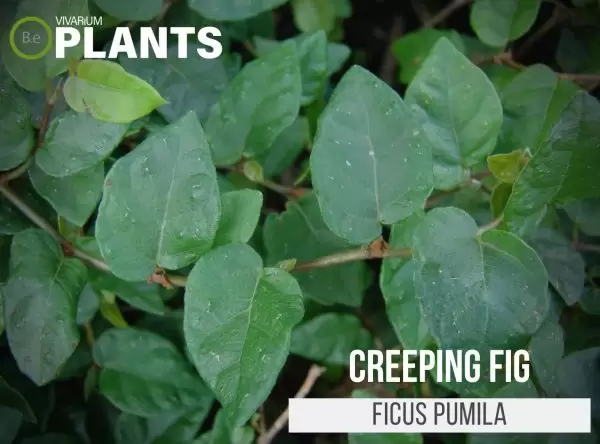

Creeping Fig (Ficus pumila)
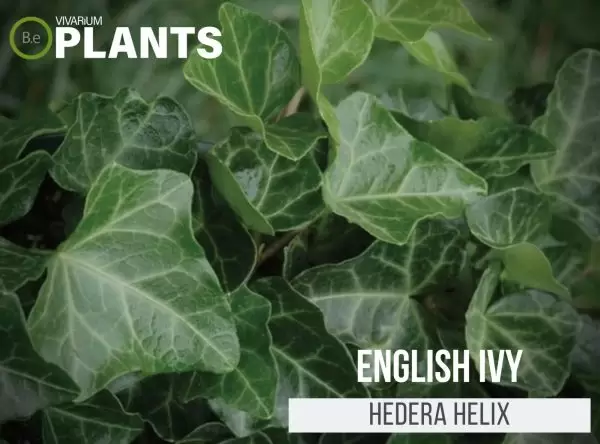

English Ivy (Hedera helix)


False Pimpernel (Lindernia dubia)


Lipstick Plant (Aeschynanthus radicans)


Polka Dot Plant (Hypoestes phyllostachya)
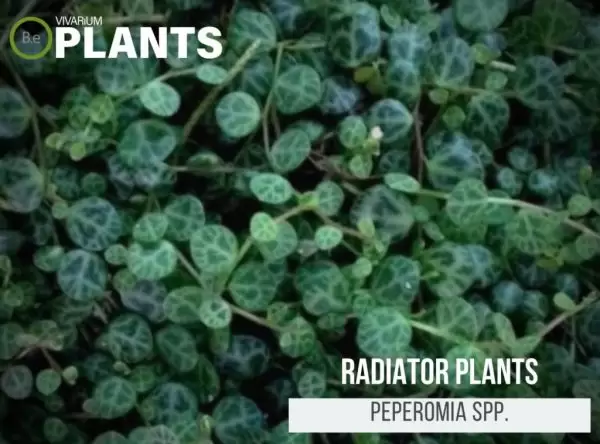

Radiator Plants (Peperomia spp.)


String Of Pearls (Curio rowleyanus)
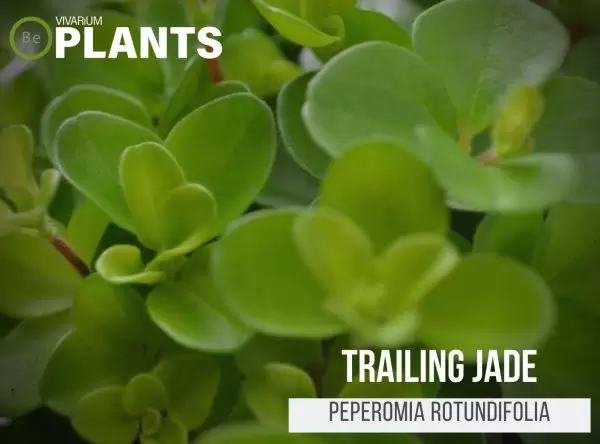

Trailing Jade (Peperomia rotundifolia)


Wandering Jew (Tradescantia zebrina)


Yellow Jewelweed (Impatiens repens)
Epiphytic Plants
Epiphytic plants, in my opinion, are one of the biggest advantages paludariums have over other types of vivariums.
These are plants that grow with or without traditional substrates. They are often found on trees and rocks.
The drawback of working with plants not placed in the soil is they usually require a lot of humidity to receive their nutrients.
Areas of a paludarium that lack high humidity can easily be compensated with mist or fog.
Here is a list of paludarium plants that are commonly used in the hobby:
Air Plants
Bromeliads and other more traditional air plants are extremely common foliage found in paludariums.
These plants can easily be attached to wood or a rock high above substrates further enhancing the visual elements of a tropical enclosure.
High humidity and good lighting are the only requirements when it comes to successfully keeping this flora in an enclosure.
The list of species possible is infinite so I will only list the general species most popularly used as a paludarium plant:
(Click on a plant to learn more about it!)
Mini Ferns
There are a number of mini ferns that need well-drained soils perfect for paludariums.
This foliage adds an element of realization to a tank that very few other plants can compete with.
Furthermore, having the ability to grow without soil at all makes these ferns special.
Here is a list of epiphytic ferns that take paludarium plants to a whole new level:
(Click on a plant to learn more about it!)


Autumn Fern (Dryopteris erythrosora)
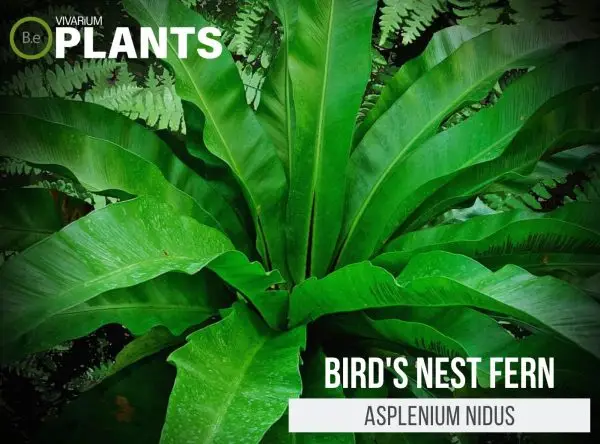

Bird’s Nest Fern (Asplenium nidus)


Boston Fern (Nephrolepis exaltata)
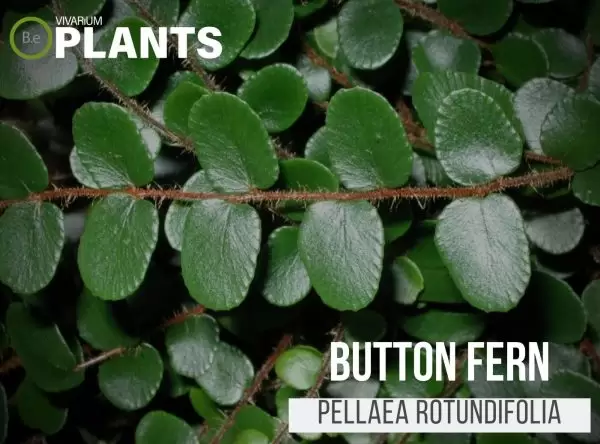

Button Fern (Pellaea rotundifolia)


Crocodile Fern (Microsorum musifolium ‘crocodyllus’)


Delta Maidenhair Fern (Adiantum raddianum)
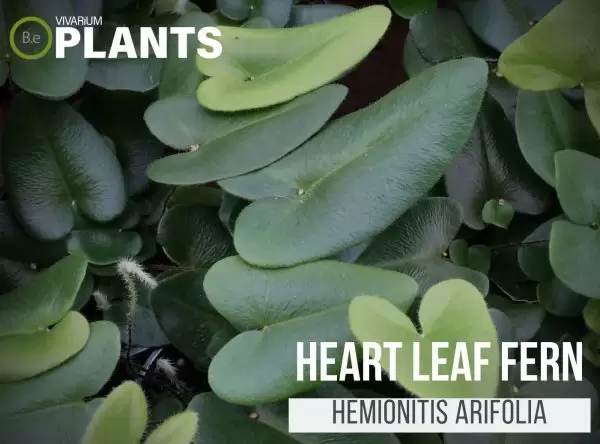

Heart Fern (Hemionitis arifolia)


Lemon Button Fern (Nephrolepis cordifolia ‘duffii’)


Rabbit Foot Fern (Davallia tyermanii)


Silver Lace Fern (Pteris ensiformis)
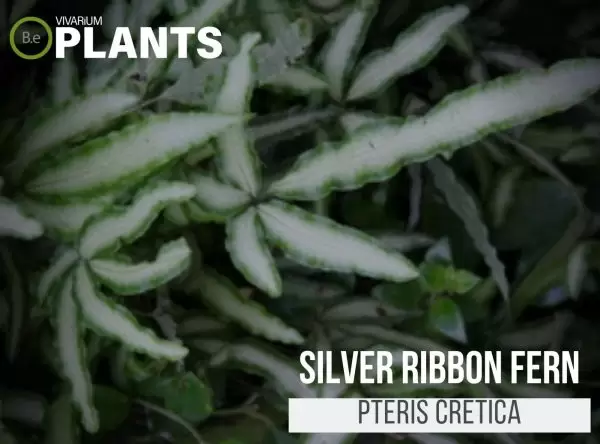

Silver Ribbon Fern (Pteris cretica)


Staghorn Fern (Platycerium spp.)
Mini Orchids
Mini orchids are another type of epiphyte becoming more common in paludariums.
This delicate flowering flora is found to do far better within enclosures than they are as traditional houseplants.
The list of orchids suitable is also overwhelmingly large.
So I will only list general species commonly used in tropical vivariums:
(Click on a plant to learn more about it!)


Cattleya Orchids (Cattleya spp.)


Dancing Lady Orchid (Oncidium spp.)
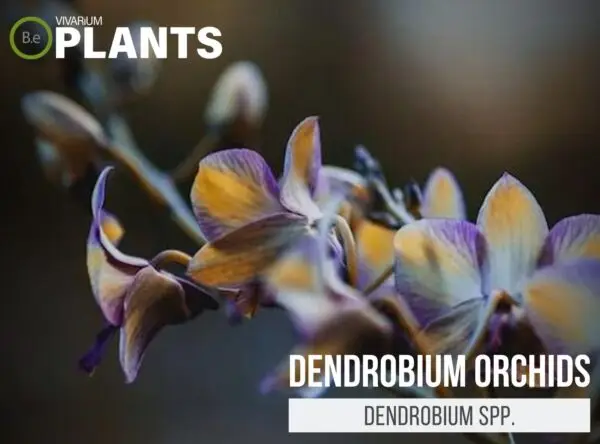

Dendrobium Orchids (Dendrobium spp.)


Laelia Orchids (Laelia spp.)


Lepanthes Orchid (Lepanthes spp.)


Masdevallia Orchids (Masdevallia spp.)


Monkey Face Orchid (Dracula spp.)


Moth Orchids (Phalaenopsis spp.)


Platystele Orchids (Platystele spp.)


Tolumnia Orchids (Tolumnia spp.)
In Summary
When it comes to stocking paludarium plants, focus on the ecosystem you are trying to recreate.
These types of vivariums often represent swamp, marsh, and tropical conditions.
Building around that ideology will make it safe and easy for plants to thrive in any aqua-terrarium.
I hope this guide gives you a more structured understanding of the exotic selection of foliage one could work with.
Frequently Asked Questions
Many aquarium plants are able to thrive out of water. These include Anubias, Java Fern, and Alternanthera. Anubias can be planted on driftwood or rocks and do not require any soil to grow.
Java Fern can also be attached to driftwood or rocks, as well as kept partially or totally submerged in the aquarium. Alternanthera is a great aquarium plant for both aquariums and ponds as it can be grown with its roots fully or partially submerged.
Paludariums provide ideal conditions for many tropical and semi–aquatic plants to thrive. Most of these plants require at least 60% humidity and temperatures between 70 to 85°F.
A substrate of soil mixed with gravel, sphagnum moss, and/or eco–substrate will provide the necessary nutrients to the roots of most plants. Plants should be placed between the water and the land section of the paludarium. Additionally, the addition of supplementary lighting will provide an ideal environment for growth.
Here’s a list of common plants used in a paludarium:
- Java Moss
- Java Fern
- Water Lettuce
- Anubias Nana
- Anubias Congensis
- Bolbitis Heudelotti
- Water Wisteria
- Dwarf Sagittaria
- African Water Fern
- Amazon Swords









